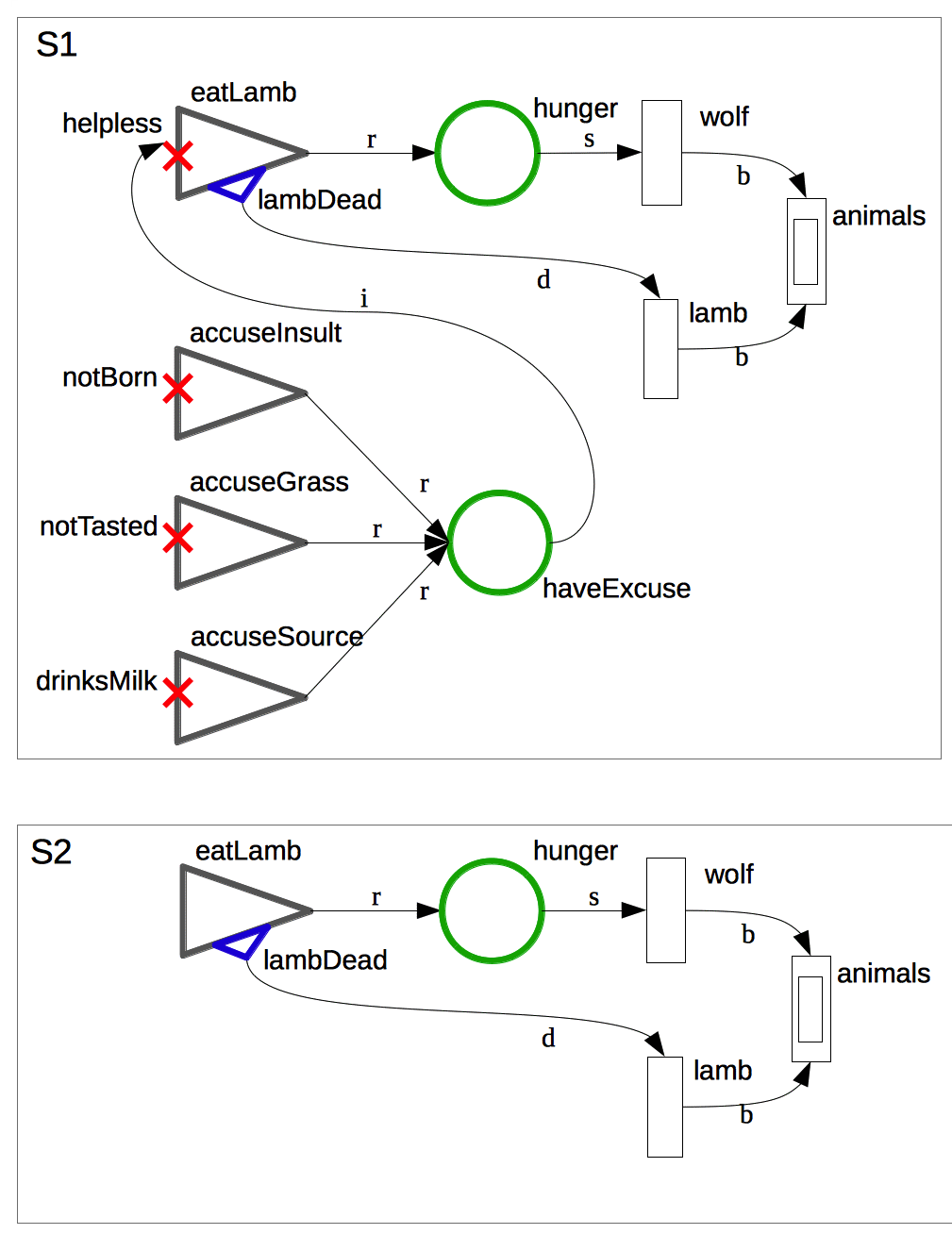Difference between revisions of "The Wolf & the Lamb"
From IDSwiki
(→Dramatic Cycles) |
(→Dramatic Cycles) |
||
| (One intermediate revision by the same user not shown) | |||
| Line 7: | Line 7: | ||
|<div style="text-align: center;">'''{{PAGENAME}}'''</div>]] | |<div style="text-align: center;">'''{{PAGENAME}}'''</div>]] | ||
===Dramatic Cycles=== | ===Dramatic Cycles=== | ||
| − | * ((eatLamb,hunger,wolf,animals),( | + | * ((eatLamb,hunger,wolf,animals),(eatLamb,lambDead,lamb,animals)) |
Eating the lamb is good for the wolf but bad for the lamb. | Eating the lamb is good for the wolf but bad for the lamb. | ||
===Comments=== | ===Comments=== | ||
[[Category:Fables]] | [[Category:Fables]] | ||
| + | The story works not by the cycle itself, a mere interpersonal conflict, but by the transition from a situation where the wolf feels the need to find an excuse to a situation where this need does not exist anymore. See also [[The Fox & the Grapes]]. | ||
Latest revision as of 11:39, 27 April 2016
Aesop's Fables - 11. The Wolf & the Lamb
- The Aesop's fables dramatic structures -
This page is part of a computational narratology project
Contents
Text
Structure
Dramatic Cycles
- ((eatLamb,hunger,wolf,animals),(eatLamb,lambDead,lamb,animals))
Eating the lamb is good for the wolf but bad for the lamb.
Comments
The story works not by the cycle itself, a mere interpersonal conflict, but by the transition from a situation where the wolf feels the need to find an excuse to a situation where this need does not exist anymore. See also The Fox & the Grapes.
